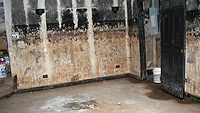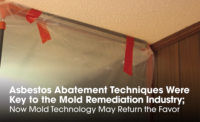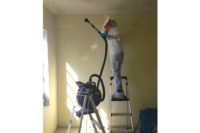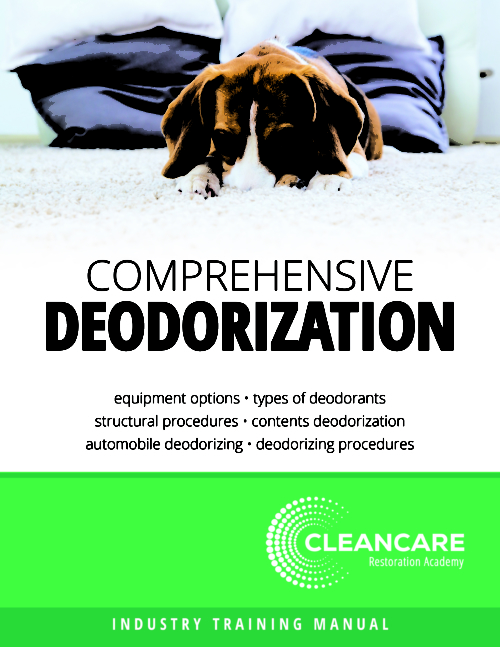Letter to the Editor: The Mold Remediation Coaster

Editor’s Note:
In January, R&R featured a roundtable discussion on mold remediation. This letter is in response to that article – and offers a bit of a different viewpoint. At R&R, we love to hear from readers, and want to encourage and foster conversations about important topics in the industry.
Thank you, Rachel, for this insightful response.
–Michelle, Editor-in-Chief, R&R.
Mold remediation has been a controversial topic since it was recognized as a service provided by many remediation contractors. The main components of a successful remediation project include correcting the source of moisture, proper use of containment, partial pressure differentials, HEPA filtration and personal protective equipment. The use of chemicals in the cleaning and restoration industry has also been controversial. I have been called the “anti-chemical queen” for years. Although I am not opposed to chemical use, my biggest concerns are that most contractors do not know the products they are using, they are not using them according to the manufacturer directions, and sales people often promote their products by making false claims about what their products can and cannot do. The biggest one is using chemicals to kill mold. The fundamental principle in mold remediation is cleaning. Source removal is what it’s all about. This means using a product that contains a surfactant or detergent that will allow for the contamination to be suspended and physical removal can be achieved. Most products used in mold remediation are typically hypochlorite or hydrogen peroxide based products. They are intended to be used as the last step after cleaning has been done to lift or remove the stain that dematiaceous (dark pigmented) molds leave behind. In many cases sampling after cleaning will show acceptable results but the dark staining that is left behind creates concerns for building owners and for many hygienists. They are commonly used for aesthetics.
Using chemicals to “kill” mold should not be the goal of the remediation contractor. Non-viable mold spores contain the same toxigenic and/or allergenic properties as its viable counter parts. The majority of mold is non-viable to begin with. This can be easily demonstrated when comparing a culture plate to a spore trap in which only the viable mold spores will be able to grow on the media in the plate. It can be as much as 75% less than what is identified on a spore trap.
Safety of the technicians applying these products and the residual effects that could potentially impact the occupants also MUST be considered. Some of the products available to restorers can not only damage certain materials and surfaces but are extremely hazardous to the end user, the technician. The appropriate personal protective equipment is a MUST and being familiar with the safety data sheet as well as reading the ENTIRE label prior to using the product and really before it is purchased. Remediation contractors using chemical products MUST be trained to understand the product and the effect in the structure. The indiscriminant application of chemicals is not acceptable and may result in liability to the restorer.
Chemical use should never be done in place of source removal. All chemicals have limitations. In other words, there is no silver bullet that replaces the fundamental practice of cleaning, using containment and working under partial pressure differentials. Products that are fogged into buildings have several limitations. For chemical products to be effective, they have to be used at the concentration the manufacturer states. They must make adequate contact with the surface it is being applied to and must remain in full contact for the necessary time, known as the dwell time. The efficacy of any fog, gas, or vapor phase antimicrobial application is compromised when sufficient concentration cannot be maintained in a space for the necessary time.
It is also important to note that all chemicals are tested for their efficacy on pre-cleaned, non-porous surfaces, and under ideal conditions created in a testing environment. This is not how the products are being used in the field. Real-life performance is generally less than the efficacy claims the product label states.
The ANSI/IICRC S520 Standard For Professional Mold Remediation and the IICRC R520 Reference Guide For Professional Mold Remediation defines the fundamental principle of remediation as source removal. In some instances, cleaning the surface with a detergent and minimal water may do the trick. In other instances, it may require removal of the materials supporting the fungal growth either because it cannot be effectively cleaned or the material has deteriorated in structural integrity due to the water damage and/or mold growth. The inaccurate statement that the S520 promotes the removal of materials is just that, inaccurate. That decision is left to the remediation contractor based on the cleanability of the material. For example, drywall is considered porous and is generally removed and disposed. Wood framing is considered semi-porous and often is cleaned using a combination of damp wiping, HEPA vacuuming, and an abrasive step such as wire brushing, hand sanding or media blasting.
Most guidance documents that were written with recommendations for mold remediation used specific amounts of visible mold to dictate the remediation activities. The S520 and the R520 made a philosophical shift away from using visible square feet of mold growth and defined Conditions of mold contamination. Condition 1 is the ultimate goal of the contractor: to return the building back to a normal fungal ecology comparatively to an outside reference sample or an unaffected part of the building. The main reason the standard uses Conditions is because what a contractor might think is a small amount of visible growth was missing the hidden mold growth in wall cavities, flooring assemblies, and substructures. This also allows for the contractor to use third party testing identifying Condition 2 in a building where the settled spores still require removal. Condition 3 are areas that have visible mold growth present.
While there are many ways to approach a mold remediation project, the contractor should follow the standard of care as outlined in the ANSI/IICRC S520. Completing specialized training such as with IICRC to understand the mechanics of containment and air flow management is critical to reduce liability for the contractor. The IICRC standards are developed by volunteers that have actually been involved in the industry from many different facets and define the practices that are common to reasonably prudent members of the trade who are recognized in the industry as qualified and competent.
Looking for a reprint of this article?
From high-res PDFs to custom plaques, order your copy today!







